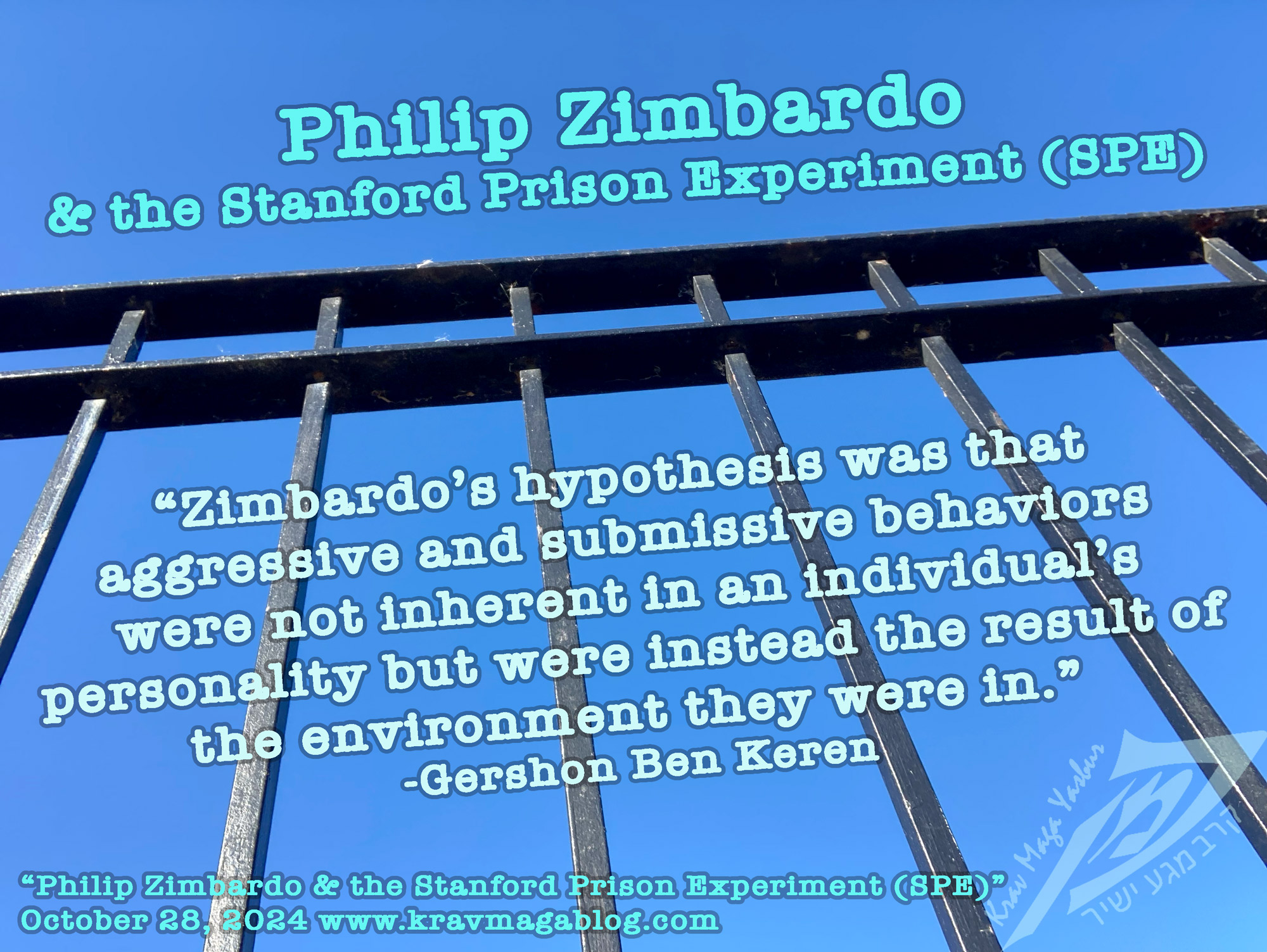Earlier this month (October 14th , 2024), Dr Philip Zimbardo passed away, aged 91. His name might be one that you aren’t familiar with, but you are probably aware of the “infamous” Stanford prison experiment (SPE) of 1971, he created and was the architect of. The experiment that was meant to last two weeks was ended after six days when Zimbardo’s, then partner Christina Maslach, visited/observed it and concluded that it had passed an ethical boundary; Zimbardo playing the role of “Prison Governor” had gotten so caught up in the experiment that he’d lost sight of the real and actual suffering that a number of participants were experiencing. I have referenced the experiment in various articles, however in this article I want to take a slightly deeper look at it, as it offers an explanation as to why normally “good” people can commit extreme acts of violence and torture and offers an insight as to how malleable the human mind is.
Participants for the experiment were recruited via an advert in a local paper which offered them $15 a day for taking part (somewhere around $120 in today’s money). The advert informed them that they would be taking part in a psychological study concerning prison life. After a brief psychological assessment, they were then assigned a “role”; either that of a prisoner or that of a prison guard. Zimbardo and those assisting him had turned the basement of Jordan Hall (where the psychology department at Stanford University was located), into a mock prison with cells (with bars), solitary confinement areas, and guard stations etc. Zimbardo’s hypothesis was that aggressive and submissive behaviors were not inherent in an individual’s personality but were instead the result of the environment they were in e.g., if someone was put in a position of power and authority, their “personality” and behaviors would adapt to that role, equally if a person was made to adopt a submissive role – such as being a prisoner – they would adapt their behaviors accordingly etc. His research centered around the idea that environment and situation was more important to the way in which people act than their inherent personality traits e.g., under the “right” conditions even those individuals known for their kindness and integrity could engage in heinous and despicable acts. Zimbardo later went on to defend US guards at the Abu Ghraib prison, in Iraq, who were being prosecuted for torturing inmates, making the argument that they weren’t “individually” and fully responsible (he didn’t argue that there was no personal responsibility but thought that the original sentences should be lessened) for their actions but were products of the environment that the US military had created i.e., that they had lost their personal identity by having to conform to a particular role and a set of expectations that accompanied it etc. In the SPE, he had witnessed those who had been assigned as guards treating those who had been assigned the role of “inmates” in a degrading and humiliating manner after only a few days – this included putting inmates into sexually humiliating positions with each other; something that had regularly happened to prisoners at Abu Ghraib. It is worth noting that there are those in academia who believe that whilst Zimbardo may not have given direct instructions to those playing the role of “guards” he did encourage them to push the envelope regarding the authority they had.
Zimbardo’s conclusion from the experiment – after having to end it early, due to the very real psychological and emotional distress that the “guards” were causing the “inmates” – was that the transition from “good guy” to abuser was a process. In a paper entitled “A situationist perspective on the psychology of evil: Understanding how good people are transformed into perpetrators”, he listed and described seven things/steps that “assist” seemingly good people to adopt the role of a violent abuser. An individual is unlikely to initially engage in a major act of abuse - they are more likely to take a “small step” that they don’t think too much about. Abusive partners who engage in IPV (Intimate Partner Violence), will often say that when they first physically hit their partner it wasn’t something they meant to do but having done it, it became “easier” to do again i.e., once a line had been crossed it became easier to keep crossing them. It also becomes easier to abuse someone if they can be dehumanized by labelling or casting them as belonging to a particular group. If you see an “immigrant” as opposed to a “refugee”, you may be more likely to have a negative and less than human view of them i.e., they are a person who is looking to exploit a country, rather than someone who was displaced from one etc. Zimbardo also made the argument concerning the diffusion of personal responsibility e.g., when you identify as part of a group, when you commit abuses and injustices as part of that group, you feel/believe that the responsibility for your actions is shared amongst all members, lowering/reducing your own culpability e.g., if you as an individual throw a brick through a window as part on an angry mob, you are not individually responsible, the mob shares that responsibility, reducing your own. This diffusion accompanies de-individualization i.e., you become an anonymous group member. More modern research suggests that rather than becoming anonymous/lost in a group, you actually gain a “new” social identity from belonging to it e.g., in the SPE, guards didn’t feel anonymous, they proudly felt part of a group, which made them uncritical of group norms, and passively tolerant of other members actions through inaction/indifference. If the “group” has a hierarchical structure, the result is not questioning the orders from those above you.
Later in his work Zimbardo suggested that just as a “bad” situation can result in negative behaviors, so can a “good” environment result in positive ones etc. Although known primarily for the Stanford Prison experiment, Zimbardo was a psychologist who was interested in many other areas of the human mind, including shyness (founding the shyness institute) and heroism (creating the HIP – Heroic Imagination Project – that trains “ordinary” individuals to engage in “heroic” endeavors). He also created the Zimbardo Time Perspective Inventory (ZTPI), that measures how much time you spend positively and negatively thinking about the past, present and future; a tool which has been used to help treat PTSD (you can take the 56 question survey online by clicking here). Whilst Zimbardo’s Stanford prison experiment is likely to keep his memory alive – at least amongst psychology students – for a very long time, his other contributions to the discipline/subject shouldn’t be forgotten.
Share:

Gershon Ben Keren
2.8K FollowersGershon Ben Keren, is a criminologist, security consultant and Krav Maga Instructor (5th Degree Black Belt) who completed his instructor training in Israel. He has written three books on Krav Maga and was a 2010 inductee into the Museum of Israeli Martial Arts.
Click here to learn more.

